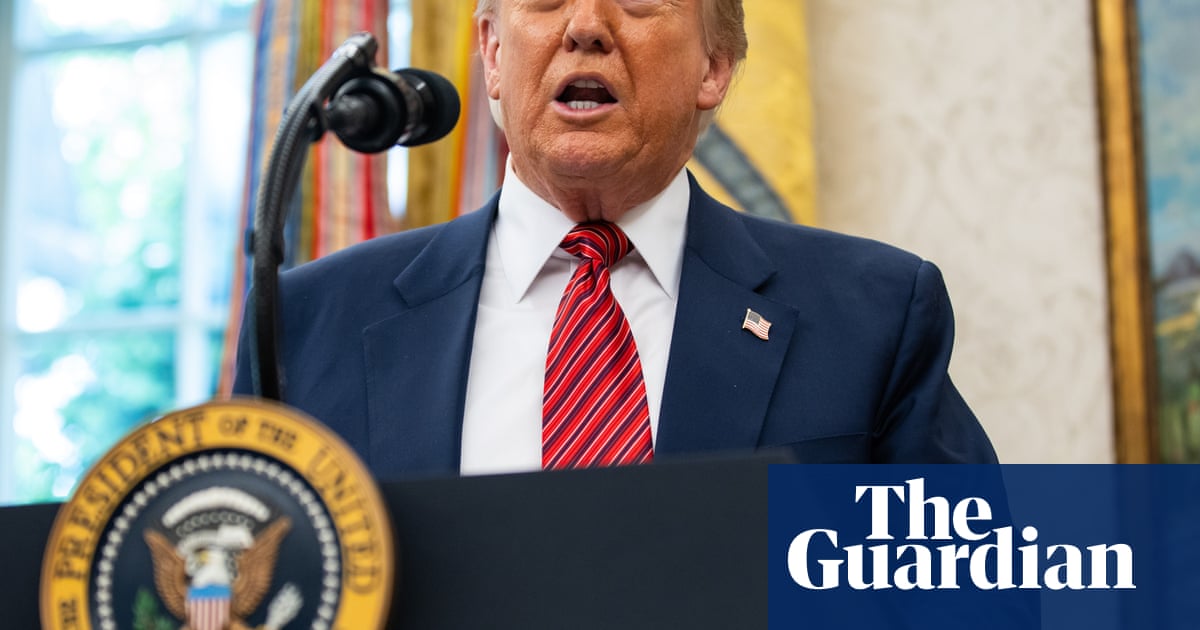Donald Trump will inevitably claim Monday’s temporary truce in the US-China trade war as a victory, but financial markets seem to have read it for what it is – a capitulation.
Stocks were up and bond yields were higher after US treasury secretary Scott Bessent’s early morning press conference in Geneva, where he has been holding talks with China.
As with theUK “trade deal” last week, the US is not reverting to the status quo before Trump arrived in the White House.
Instead, tariffs on Chinese goods will becut from 145% to 30%– initially for a 90-day period. In return, China has cut its own tariffs on US imports to 10%, from the 125% it had imposed in retaliation against the White House.
That still marks a big shift in the terms of trade between the two countries since before Trump came to power, but falls far short of what was in effect a trade embargo.
The two sides have pledged to keep talking, but there was no reference in the statement put out by the White House to other gripes it has previously raised about China, including the weakness of the yuan.
Instead, the statement hailed “the importance of a sustainable, long-term and mutually beneficial economic and trade relationship”. The language was rather different to Trump’s Liberation Day speech, about the US being “looted, pillaged, raped and plundered by nations near and far”.
In other words, the president has caved. He may have been swayed by market wobbles but it seems more plausible that dire warnings from retailers about empty shelves – backed up by data showingshipments into US ports collapsing– may have strengthened the hands of trade moderates in the administration.
Confronted with warnings of a shortage of toys, Trump told reporters that children should be happy with“two dolls instead of 30 dolls”, and they might “cost a couple bucks more” than usual. But it is difficult to imagine even this most bullish of presidents withstanding the attacks that would come his way if he began to be seen as responsible for Covid-style shortages of key goods in the world’s largest economy.
Instead, the White House seems to have opted for tactical retreat. The China-US conflict was always the hottest theatre of confrontation in Trump’s trade war, with a longer history and deeper public support than his quixotic attacks on Mexico and Canada.
If Trump is indeed ready to give in even with Beijing, it sends a signal that some of the other aggressive aspects of his trade policy may be negotiable.
Sign up toBusiness Today
Get set for the working day – we'll point you to all the business news and analysis you need every morning
after newsletter promotion
What Bessent and his Chinese counterparts have not erased, however, is the corrosive uncertainty that has gripped investors across the global economy since Trump’s“Liberation Day” tariff announcement.
China tariffs have only been slashed temporarily, for now and many other countries are still awaiting negotiations on where their tariff levels will end up, after that other 90-day pause, on Trump’s “reciprocal” levies, due to end in July.
Meanwhile, companies throughout the global trading system are left wondering which particular iteration of the policy is likely to stick, and may well be tempted to continue working around the US, where possible.
And with 30% tariffs remaining on Chinese exports to the US, the bigger picture remains of two great economic powers pulling apart.
